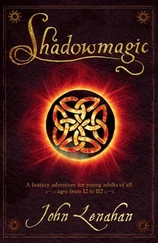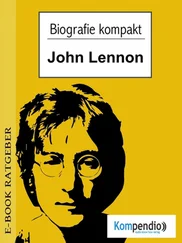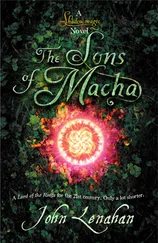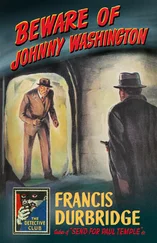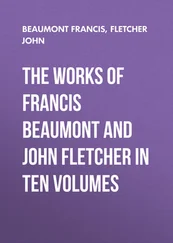1 ...8 9 10 12 13 14 ...18 Wandsworth Jail
JOHN’S NEW home was now 251 Menlove Avenue, a three-bedroom, bay-windowed, pebble-dashed semi-detached house, complete with lead-glassed quarter-light windows and the name plate of ‘Mendips’. John’s bedroom was the small box room over the vestibule. He would stay there throughout his childhood and into early adulthood.
Mendips was a sign to Mimi of having ‘made it’ – no more living next to butchers’ shops, drapers or costermongers. Here at Mendips, Mimi could look over a golf course a hundred yards away and was surrounded by a variety of mansions built by the great and the good, whose money had been made in trade from the port. Woolton should have been an ideal place to bring up a child with its woods, green spaces, its golfers and a village with a history going back to the Vikings. For post-war Liverpool families living with their bomb-damaged houses, cluttered inner cities and decrepit housing stock, Mendips was a dream. For five-year-old John, it would be anything but. The post-war world of Britain in which the young John was brought up was in a period of social revolution. A war-weary population was demanding a better way of life to the deprivation suffered during the 1930s. The 1945 General Election produced a shock at the polls in the shape of a landslide victory for the Labour Party, which ran on a mandate of addressing issues of poverty, social class and the fairer distribution of wealth. The formation of the Welfare State was to be the vehicle for this change.
The 1945 General Election radically changed the country’s political landscape, with newly elected Labour MPs singing ‘The Red Flag’ on the first day of Parliament, which caused more than a hint of concern to the British Establishment. The General Election result was seen by many as a kick in the teeth to the Conservative Leader, Winston Churchill. His supporters were amazed that the electorate should see fit to jettison the nation’s wartime leader. Upon hearing the election result, Arthur Marwick relates how an upper-class supporter of the Tory party announced: ‘But this is terrible – they’ve elected a Labour Government and the country will never stand for that.’ 1
The Welfare State was to provide a clear divide between those in favour of the ‘pull yourself up by your bootstraps’ ideology and those in favour of collective support. The Welfare State was to deliver cradle-to-grave provision of social care. This included the need for decent housing. Many, like Mimi and her family, had already followed the route of the ‘respectable working classes’ in moving steadily further afield from inner-city Liverpool. Indeed, not long after Mimi took John to Mendips, the following item appeared in the Liverpool Echo regarding a home in Mimi’s old neighbourhood, Head Street: ‘A Beaufort Street family were awakened at one in the morning by a loud crash to find a hole five foot square [in diameter] had opened in the side of their home.’ 2The reporter concluded with the view that this was not an uncommon incident.
Berkley Street in Toxteth, where the Stanley family had moved, was sliding towards decline just as the family moved further afield again to Newcastle Road in Wavertree. Sociologist J. B. Mays’ research into the once prestigious Princes Road area of Toxteth area noted that:
It is significant that Negroes serving in the United States Forces stationed in the Merseyside area find their way to the Berkley Street region in search of recreation and companionship. There is little doubt that one reason for the visitation of coloured and white men is the attraction of certain dubious clubs where illegal pleasures may be bought. According to reliable information, there were a great number of brothels in the area during the war years. 3
Liverpool’s Berkley Street was the area where Stanley Crouch’s ‘Negro chaos’ met ‘Scouse chaos’ and lindy-hopped the night away. Like many factors of life, housing and where you lived in Liverpool could be a seen as a badge of honour or shame. Liverpool’s rented housing stock always had a history of being extremely poor in quality. In 1954 the National Building Association estimated that Liverpool had around 88,000 unfit dwellings which housed approximately 90,000 families. This meant almost a third of the city’s population had to live in slum housing.
When John commented on where he lived, he insisted it was not the poor kind of slummy image that was projected in all The Beatles’ stories. In the class system, it was about half a class higher than Paul, George or Ringo, who lived in government-subsidised houses. 4
He was fully aware of how distinctly housing differentiated people. This was why the council estates where Paul and George lived brought out all the snobbery in Mimi. During John’s time under her ‘mentorship’ there would be frequent and varied references to both Paul and George as ‘scruffs’ and ‘common types’. Indeed, when a young Paul McCartney came calling for John, he was made to wait by the side entrance of Mendips and, after being given a slow, deliberate once-over by Mimi, she would call to her nephew: ‘John, your little friend’s here!’ Paul noted:
She’d smile. I’d know what she’d done. She’d know what she’d done. I would ignore it. It was very patronising … she was very aware that John’s friends were lower class. John mixed with the lower classes, I’m afraid, you see. She was the kind of woman who would put you down with the glint of an eye. 5
‘Common’ and ‘lower’ seemed to be her regular terms of reference, and Paul McCartney was aware of this clash of cultures from very early on:
John, because of his upbringing and his unstable family life, had to be hard, witty, always ready for the cover up, ready for the riposte, ready for the sharp little witticism. Whereas with my rather comfortable upbringing – a lot of family, lots of people, very northern, ‘Cup of tea, love?’ – my surface grew to be easy going … 6
Social hierarchies and the shifts they were subject to were certainly significant at this time. In response to a commissioned Gallup Poll in the early 1950s which asked ‘What do you think [the] Labour [Party] stands for?’ responses included: ‘More money for less work.’ A headmaster’s wife: ‘Giving the working classes power they are not fitted to use.’ A commercial traveller: ‘They say social security but I think class war.’ A solicitor’s wife: ‘Pampering the working man.’ A dentist: ‘Class hatred.’ An engineering technician: ‘Revenge and grab.’ A butcher’s wife: ‘To keep down the people with money.’ The same set of interviews revealed the views of a housewife who believed that ‘the chief value of the middle classes is that their way of life represents a standard which the working class can emulate’. 7Many of those at the bottom of the social hierarchy that the Labour Party sought to help lived in poor housing and welcomed the demolition of the slums, which were to be replaced by central government-supported council house estates. But in post-war Britain, Mimi and many others felt under attack by the Welfare State’s New Jerusalem. The issue of financially supporting social, educational and economic provision in the country at large became a battleground for left and right. Mimi saw herself as a ‘get up and go’ type of person and believed that giving people state money only made them ‘soft’.
The consensus of the post-war period in many ways hid a build-up of resentment on both sides of Britain’s class divide, with the upper and middle classes resenting the ‘uppity’ working class for not recognising their betters, and the working class equally resentful for not having their part in the recent World War recognised or being provided with sufficient provision for a decent quality of life.
Читать дальше




